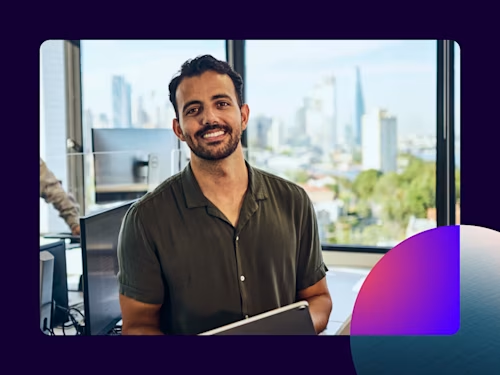
5 reasons why ‘copy and paste’ won’t cut it as an eSignature
Not sure whether a copied signature is OK on that PDF contract you’re signing? See why copy-and-paste won’t cut it when you’re digitally signing a document.

⌘C + ⌘V. Two of the most-loved commands on the common keyboard (or, Ctrl+C and Ctrl+V for all you PC users out there). While copy and paste are super helpful shortcuts in your day-to-day tasks, they don’t ⌘X it (ahem, cut it) when it comes to eSignature.
Sure, it’s tempting to copy your signature image file and paste it onto the new contract you need to sign. After all, who’ll know the difference? The thing is, legal eagles and courts of law can quickly spot the difference. And, if they deem your signature illegitimate or unlawful, then whatever you’ve signed will become null and void, too.
Still not convinced? Here are five good reasons why you should ditch the old ‘cut and paste’ and instead use a proven, secure eSignature solution like Docusign.
1. A copied signature isn’t legally enforceable
Every country sets out specific rules around the legality of eSignatures. Check out a summary of Australia’s rules here, for example. Generally, for an eSignature to be legally enforceable, the method of signing needs to be deemed reliable, and proven to identify the person. A copy-and-pasted signature won’t cut it.
2. If you can copy your signature, others can, too
Think about it. If you can easily copy your signature image file in one document, and paste it into another, what’s stopping other people from doing the same thing with your signature? Even though forging a signature carries a jail term of up to ten years, it doesn’t deter some heinous criminals from stealing your identity. It’s why governments have tight rules around eSignatures – and it’s why everyone should comply.
3. There’s no court-admissible audit trail
When you Docusign something, it might feel like you’re simply adding a ‘copied’ signature file to a document. But behind that file lies some powerful data – things like time stamps, tamper seals, IP addresses, and certificates of completion. The full audit trail shows who has looked at the document, and when. Importantly, all this data is recognised as valid in court. A copied-and-pasted image of a signature on a PDF is not.
4. Forget about 2FA
Without a secure eSignature solution like Docusign, there’s no real way of knowing your signers are who they say they are (which brings you back to point 2, above). With Docusign, you can set multiple levels of authentication, such as email-based or SMS authentication, access codes, and even ID verification. If you’re the party collecting other people’s signatures, this extra level of protection is extremely important in today’s digital age.
5. Emailed contracts are eminently hackable
If the document you’re signing – or sending to another party to sign – contains sensitive data like personally-identifiable information, pricing, proprietary business terms, or intellectual property – you can’t afford to take risks. Yet sending the document via email is risky business, and it’s easy for it to fall into the wrong hands. Not so with Docusign. All envelopes we send come with a digital checksum to validate that the document hasn’t been tampered with.
Still not convinced? Check out our Security Brief to see how watertight a Docusign contract can be. Or, to see how secure and easy it is to send and sign using Docusign, start a free trial today.
Docusign IAM is the agreement platform your business needs


